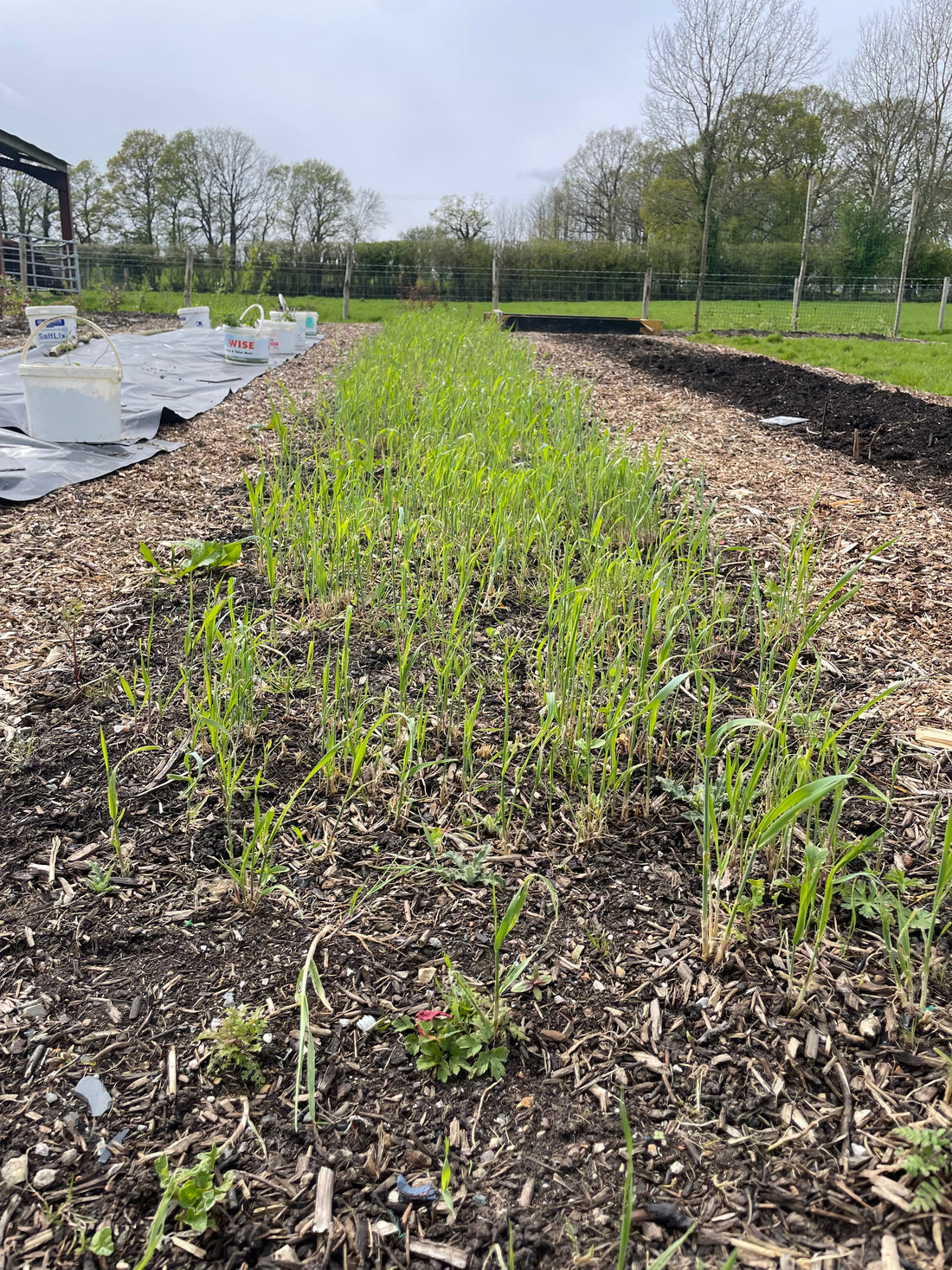
Cover Crops
Share

Having living roots is key to healthy soil; the roots give out exudates (mainly sugars) which feed the soil biome. In turn, these microorganisms give back to the plants, in the form of minerals which they free up for use by plants. Having plants in a bed also protects against erosion and runoff due to rain (and we’ve certainly had our fair share of wet weather this Winter!).
Knowing all this, I decided to plant a cover crop. Cover crops are any plants grown for reasons other than harvesting for profit. There are lots of different benefits that can come from a cover crop: -
- Maintaining the soil microbe population
- Preventing erosion
- Reducing weed growth
- Aerating the soil (large roots can create air gaps)
- Increasing the soil’s nitrogen content (by using a leguminous crop
For me, the first three of these was my priority as the new compost didn’t need aerating nor more nitrogen. This led me to choose a multispecies seed mix from Cotswold Seed Co.

I also sowed a grazeable mix, as I hoped to use sheep from the family farm to terminate the crop.
I sowed the crop in late September, while the soil was still warm enough for the seeds to germinate and in no time at all, the shoots started to appear. Over the winter, the growth slowed down but since the weather has warmed up, the seeds are now romping away.
 Soon, I will be planting out lots of seeding, so the next step is to terminate the crop. I have already done this with one bed and will do the others as they are needed. The first step to doing this is to strim the crop back, to weaken the plants. Next, I cover the bed with thick black plastic to stop light getting to the plants. As you can see from the picture, I had to add lots of weight to the plastic to hold it down in all the storms we’ve been experiencing!
Soon, I will be planting out lots of seeding, so the next step is to terminate the crop. I have already done this with one bed and will do the others as they are needed. The first step to doing this is to strim the crop back, to weaken the plants. Next, I cover the bed with thick black plastic to stop light getting to the plants. As you can see from the picture, I had to add lots of weight to the plastic to hold it down in all the storms we’ve been experiencing!

After 3 weeks, the plants will have died, ready for me to plant into the bed. There’s no need to pull out the dead plants as they will just add organic matter to the soil to feed those microbes! I’ve taken a peek under the first bed after nearly 3 weeks of being covered and it looks great.
